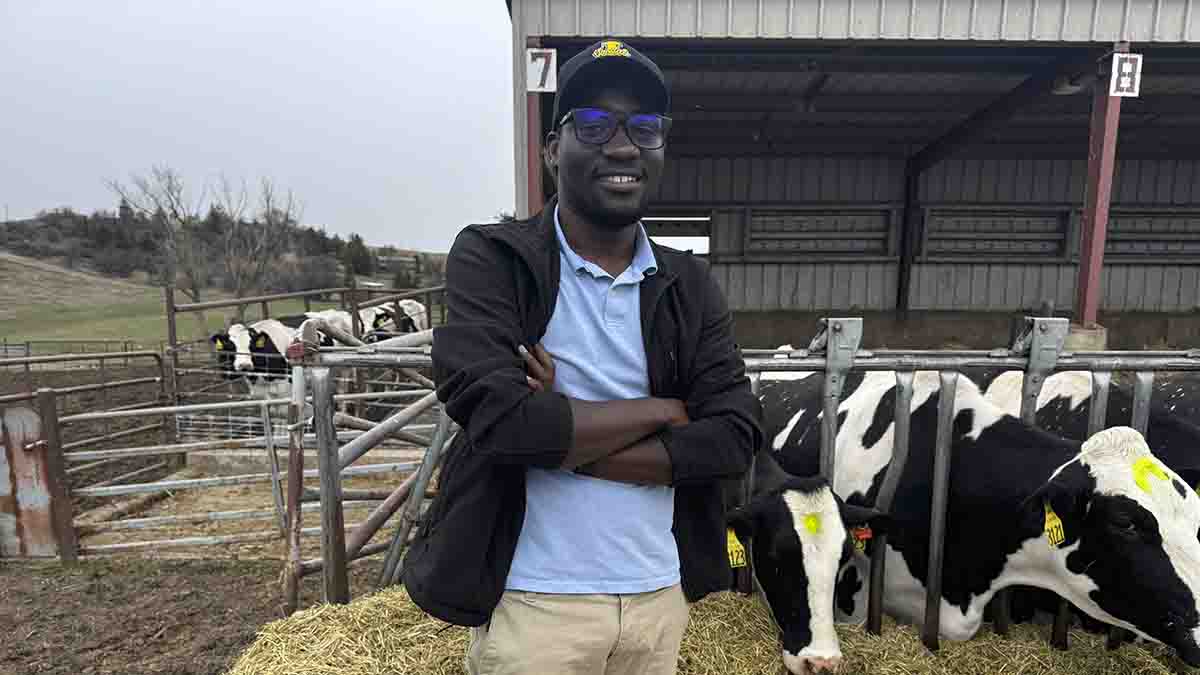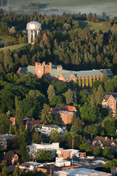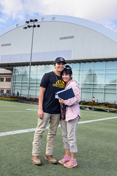Curbing Dairy Emissions
April 02, 2025
University of Idaho’s new Extension air quality specialist, Gilbert Miito, grew up on a mid-sized dairy — at least by the standards of the village of Masaka in central Uganda.
Each morning, Miito and his three brothers awoke at 6 a.m. to milk and tend to their family’s six dairy cows. The boys would bike throughout the countryside in search of tall grass, which they swathed with sickles and pedaled to their corral to feed the herd.
The rustic dairy of Miito’s childhood contrasts starkly with the state-of-the-art University of Idaho facility where he’ll soon be conducting research to help the state’s dairy industry characterize and curb its greenhouse gas emissions. The Idaho Center for Agriculture, Food and the Environment (Idaho CAFE) will be the largest research dairy in the U.S. when it starts milking operations in Rupert in early 2026. CAFE will initially house 400 cows and will gradually grow its capacity to accommodate a herd of up to 2,500 animals.
In Uganda, a typical “big” dairy has about 10 cows, while a small dairy might simply comprise a couple of cows tethered to trees, with most of the milk used for home consumption.
“Having animals is a source of prestige in Uganda,” Miito said. “The milk is amazing. It’s very organic — natural, grassfed.”
Miito began working at U of I’s Twin Falls Research and Extension Center on Jan. 6, having completed his undergraduate education in his home country before moving to the Pacific Northwest to earn a doctorate in biological systems engineering from Washington State University, where he researched manure management and emissions. He accepted a postdoctoral research position at the University of Missouri, also working with manure management systems. He then returned to the West to accept a position with a private company in California, BioFiltro, where he designed, built and supervised the assembly of biological treatment systems using worms and microorganisms to filter liquid dairy waste.
When he saw a posting for the UI Extension position, Miito was enticed both by the perfect fit to put his experience and skills to use and the opportunity to work at a world-class research dairy.
“There is a lot of buzz around dairy farms and emissions, so there is a lot of opportunity around that,” Miito said. “The fact that we have CAFE as a research center, I think that improves our chances of getting a lot of these research grants.”
The second phase of construction of CAFE — including the maternity barn, research barn, commodity storage, lagoons and an office building with classrooms — is now underway and Miito has begun gathering baseline emissions data from the CAFE site. His work will focus on identifying best practices for managing, transporting, storing and using manure to minimize emissions of greenhouse gases such as methane. He’s also teamed up with U.S. Department of Agriculture researchers in Kimberly to aid in federal dairy emission studies.
Some of the collaborative projects with USDA have involved working with private, commercial dairymen. He’s also helped the federal agency research emissions from manure spread over research plots and lagoon water applied via pivots.
“Right now, we are doing a whole-farm study, getting to understand all of the processes on a dairy farm and how they contribute to emissions to understand the hot spots on a dairy farm and then do some mitigations to test,” Miito said.
Most dairy emissions come from the combination of enteric emissions — essentially methane and ammonia in cow belches resulting from fermentation of feed in the rumen — and emissions from dairy manure. Regarding enteric emissions, Miito plans to evaluate various feed additives to change cows’ biochemistry to minimize emissions. He also intends to study a few options to minimize emissions from lagoons, such as trapping emissions and flaring them off and adding sulfuric acid to chemically change lagoon water and reduce ammonia emissions.
Separating solid and liquid waste is another proven strategy to reduce emissions. Miito intends to study the environmental benefits of more frequent cleaning of solids from dairy lagoons, as well as the use of improved technology for separating dairy liquids and solids.
Animal housing practices also affect dairy emissions. Miito will research how the designs of barns and ventilation systems affect emissions, as well as benefits to be gained through regular cleaning of pens.
In addition to conducting important research to help the dairy industry address forthcoming challenges, Miito views himself as an advocate for the industry and a voice of reason in communicating the realities of the industry to the public.
“I am a link between the science and all of the noise out there, so I can easily tell whoever is making that noise, ‘Hey, this is how the numbers look. We need the dairy production. This is a byproduct and this is how we can deal with it.’”

About the University of Idaho
The University of Idaho, home of the Vandals, is Idaho’s land-grant, national research university. From its residential campus in Moscow, U of I serves the state of Idaho through educational centers in Boise, Coeur d’Alene and Idaho Falls, nine research and Extension centers, plus Extension offices in 42 counties. Home to more than 12,000 students statewide, U of I is a leader in student-centered learning and excels at interdisciplinary research, service to businesses and communities, and in advancing diversity, citizenship and global outreach. U of I competes in the Big Sky and Western Athletic conferences. Learn more at uidaho.edu.






